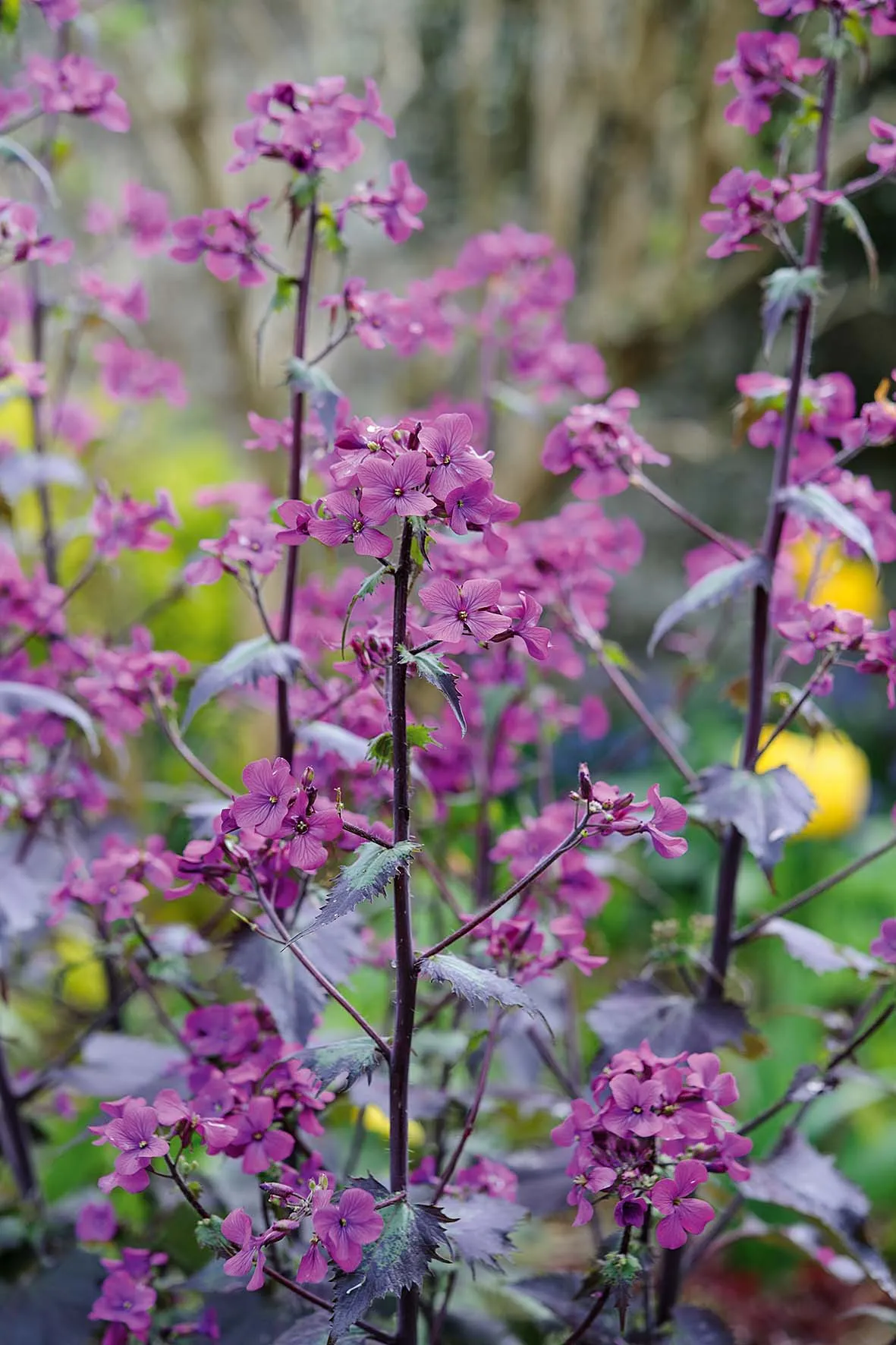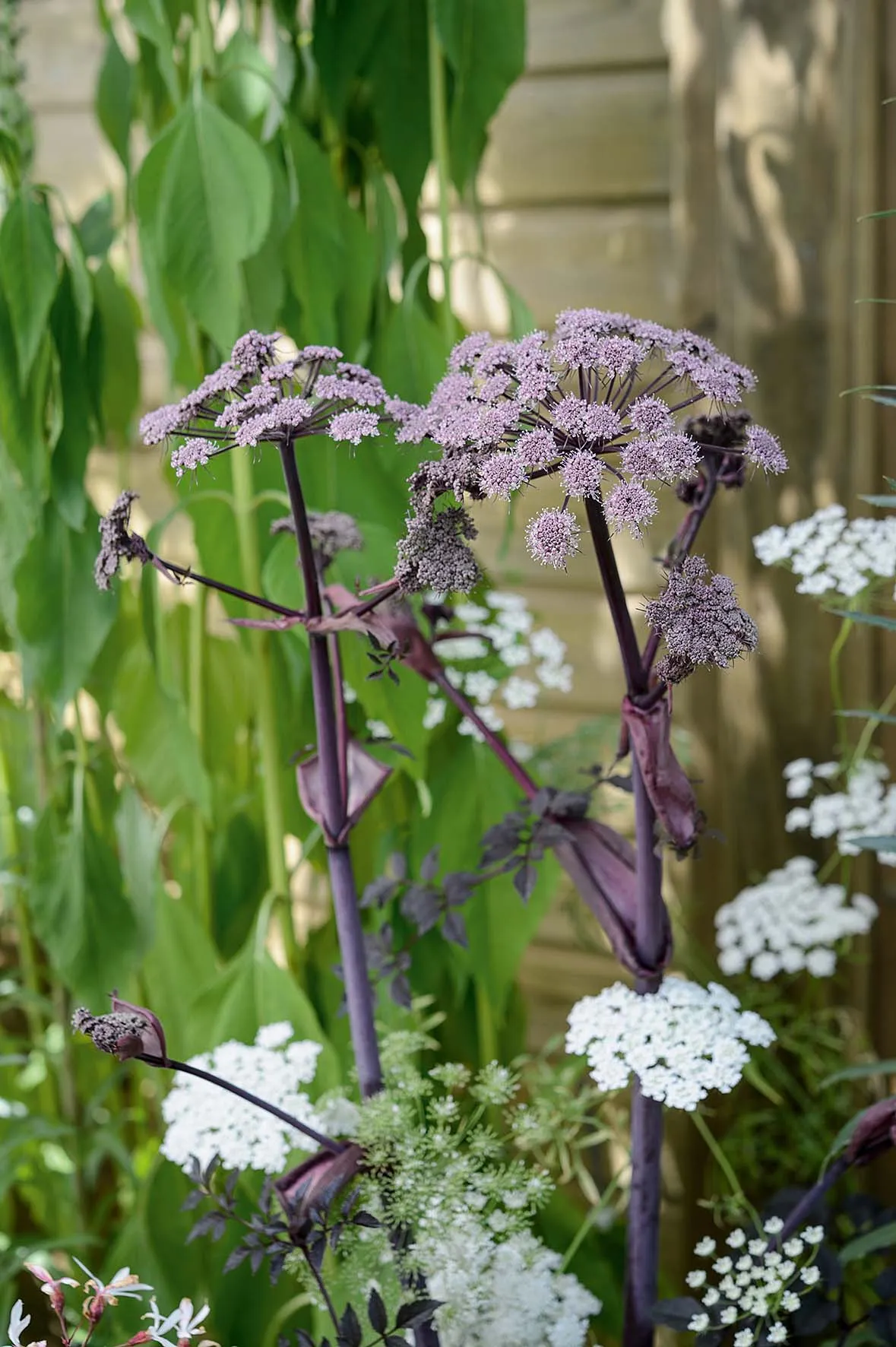Each year I grow a range of more than 20 biennials, their contribution to the spring and early summer garden is considerable, and I would not want to garden without them. By far the best way to grow them is from seed. There is something very satisfying about raising your own plants, the effect is not immediate, but the rewards are immensely satisfying. Not only do biennials provide colour in the spring garden, late-flowering biennials, such as sweet William or sweet rocket also bridge that tricky gap between spring bulbs and early emerging perennials and the summer-flowering herbaceous planting.
Biennial meaning: what is a biennial?
Whereas annuals complete their life cycle in a single season, biennials require a period of cold, called vernalisation, to initiate their flowering. From a summer sowing, biennials will produce a basal rosette of leaves, with the plant flowering, setting seed and dying in the following year.

How and when to sow biennials
When to sow biennials
The principles of sowing are exactly the same as for annual seed, but the after-care and timing is different. Whereas most annuals are sown from January through to April, biennials are sown in early summer, planted into nursery rows by late summer before been placed into their flowering positions in autumn.The first you should sow are sweet Williams followed by foxgloves, verbascum, wallflowers and pansies last of all (with the range of other biennials somewhere in-between).
How to sow biennials
The size of the seed determines the depth of sowing, a good rule of thumb is that the sowing depth should be roughly the same as the size of the seed itself. Apart from foxgloves and verbascums, which need light to germinate, all of our biennials are placed in our cool pot store in the dark, with germination taking place usually within two weeks. When they’re large enough to handle, I prick out the seedlings into plug trays before lining them out in the biennial bed for summer – you could obviously plant out to the location you want them to flower, or plant up into larger pots until ready to plant out. By the time I’m ready to transplant them to their flowering positions, usually around late October or early November, the majority have made good strong plants.
Daunted by sowing seed? Read our expert guide to planting seeds.
The best biennials to grow from seed
Digitalis purpurea f. albiflora

This white form of our native foxglove retains all the elegance and charm, with flowers held on one-sided spikes that turn downward slightly at the tips. Plant generously or allow it to self-seed freely to run through the entire bed piercing more rotund or flat shapes. 1.5m x 50cm. RHS H7, USDA 4a-8b.
Head to our plant profile for Digitalis
Erysimum ‘Pastel Patchwork’

I adore wallflowers and have grown a few every year for nearly 30 years. This new cultivar derived from Erysimum cheiri is not only drought tolerant but will also grow quite happily in poor soil. As members of the Brassicaceae family, erysimums are subject to clubroot, flea beetle and attack by cabbage white butterfly, so take preventative action. 70cm x 50cm.
Head to our plant profile for Erysimum
Eryngium giganteum ‘Silver Ghost’

A short-lived perennial best grown as a biennial. A member of the Apiaceae family thriving in hot, dry sites. Its silvery-blue flowers associate brilliantly with the acid yellows of Euphorbia or grow it in tandem with grey foliage plants of contrasting soft texture, such as Artemisia and Stachys. 90cm x 60cm. AGM. RHS H6, USDA 4a-7b.
Head to our plant profile for Eryngium
Lunaria annua ‘Chedglow’

The deep-lilac flowers of this relatively new honesty contrast wonderfully with the ripe-plum colour of the foliage, stems and seedpods. Try combining with tulips of a similar colour palette, such as Tulipa ‘Havran’, T. ‘Ronaldo’ and T. ‘Negrita’. 80cm x 50cm.
Salvia sclarea var. turkestaniana ‘Vatican Pink’

A biennial whose coarse-textured, grey leaves are not pleasant smelling, but are an attractive feature through winter and spring. But the main event is reserved for June and July when tall stiff spikes emerge and thrust upwards with white flowers and pink persistent bracts. Needs a sunny site, but can grow happily on poor soil. 1.2m x 1m.
Find out about shrubby salvias in our plant profile on other salvias to grow.
Daucus carota ‘Dara’

The wild form of the cultivated carrot is a late-flowering biennial. It has a relaxed quality, perfect for threading through borders to soften those plants with a more formal character. A rich nectar and pollen source, attracting bees, butterflies and other beneficial insects and also birds, which search out the high-energy seeds, later in the season. 75cm x 50cm. RHS H6.
Find out about other nectar-rich plants.
Verbascum blattaria f. albiflorum

A plant often overlooked, but one I love for its easy-going nature and ability to grow almost anywhere, putting itself into places with great artistry. Its five-petalled flowers are white with prominent purple stamens that appear almost to float on the wiry stems. Quick to flower, sometimes in the first year. 70cm x 30cm. RHS H6, USDA 6a-9b.
Head to our plant profile for Verbascum
Myosotis sylvatica

The humble forget-me-not blooms non-stop through spring and early summer. It energetically colonises beds and borders adding a low level welcome froth. Happy in sun or shade, but can be prone to powdery mildew if the conditions are too dry. 45cm x 60cm.
Find out more about growing forget-me-nots.
Campanula patula

A beautiful British native wildflower of hedge banks, with slender wiry stems upon which widely spaced bell-shaped flowers of violet-blue are produced. I sometimes grow it around the feet of bearded irises, which it follows in flower. 40cm x 40cm. RHS H5.
Head to our plant profile for Campanula
Lunaria annua

Honesty is one of the first spring biennials to appear blooming in late April or early May, followed by wonderful seedpods in autumn. Grow under the skirts of deciduous shrubs with early spring bulbs. After flowering most stems can be pulled away, but leave a few to develop the seedpods. 60cm x 50cm. RHS H6, USDA 5a-9b.
Digitalis purpurea ‘Sutton’s Apricot’

An old cultivar and one I liked to grow en masse in the Rose Garden at Sissinghurst. Identical in all respects, except colour, from the native purple or white foxglove. Soft-pink flowers, lightly spotted in the throat associate well with early roses and peonies. 1.2m x 60cm. RHS H7, USDA 4a-8b.
Erysimum cheiri ‘Giant Pink’

For this, as with other wallflowers, good flowering is achieved through careful transplanting. Choose a non-frosty, non-windy day to lift plants from nursery beds with a fork, leaving as many roots as possible. If the soil is dry, water it first to minimise the possibility of soil loss and root damage. After lifting, put plants in their permanent positions as soon as possible and water if necessary. 60cm x 40cm.
Dipsacus fullonum

A robust, tall biennial that can become a menace if it is allowed to self-seed. Nevertheless, a plant of great architectural presence in the garden. Mauve-coloured flowers give way to spiny seedheads, which persist all winter if you dare leave them. 1.8m x 70cm. RHS H7, USDA 3a-8b.
Delphinium requienii

A plant I first grew for the Purple Border at Sissinghurst. Tall spikes rise from a basal rosette of glossy, deep-green, slug-resistant leaves. The many flowers, the colour of a wood pigeon’s breast, provide an unusual and arresting sight in the border. 2m x 60cm.
Verbascum ‘Spica’

From June through to August this tall mullein with large, ruffled, white flowers that have the faintest hint of primrose yellow light up the garden. Leaves are grey and ovate and the stem white-felted. Flowers best in full sun on well-drained soil. 1.3m x 80cm.
Head to our plant profile for Verbascum
Hesperis matronalis var. albiflora

Sweet rocket arrives around the same time as foxgloves and can be grown in tandem to good effect. Its clusters of deliciously spice-scented flowers in white or mauve last for many weeks, even longer in semi-shade. The plant will need staking as it grows – hazel pea-sticks work well for this – and some protection early in the year from pigeons, which will eat the foliage. 1.2m x 80cm.
Matthiola incana ‘Lucinda Red’

Attractive grey foliage and almost unbeatable for the punch its flowers pack in the scent league tables. They are a bit muddled in appearance and not the most attractive, but this is not why you grow it. Group in pots and place near a door, to catch a whiff of their perfume. 50cm x 50cm.
Erysimum cheiri ‘Blood Red’

I always prefer the single-colour, highly scented wallflower cultivars, such as this, along with E. cheiri ‘Fire King’, E. cheiri ‘Cloth of Gold’ and E. cheiri ‘Giant Pink’. Most have a delicious honeyed fragrance, which is intensified by planting in a sunny situation. 40cm x 40cm. USDA 7a-9b.
Onopordum acanthium

A statuesque plant, not for the faint-hearted. Grey, heavily felted and viciously spiny basal leaves are attractive in year one. Early in year two a single woolly winged, white stem arises and branches at half-way into a candelabra of mauve thistle flowers. A plant I grew to good effect in the White Garden at Sissinghurst. 2.5m x 1m. RHS H5.
Angelica gigas

From large green leaves, with plum-coloured stems and inflated sheaths, this biennial’s refined, domed flowers of deep-maroon emerge in summer through to autumn. Looks good with sanguisorbas or, as here, with white Ammi majus. Prefers moist soil with sufficient leg-room to grow. 2m x 1.5m. RHS H6, USDA 4a-9b.
Find out about other umbellifers to grow.
Smyrnium perfoliatum

Another favourite of mine for feathering the woodland edge or for naturalising in borders to produce a wild-style aesthetic. I used it to great effect in the nuttery at Sissinghurst where the acid yellow harmonised perfectly with white bluebells, Trillium chloropetalum and Matteuccia struthiopteris. 60cm x 40cm. RHS H5.
Where to buy
• Chiltern Seeds
• Higgledy Garden
• Sarah Raven
• Seedaholic
• Special Plants








